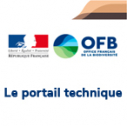The Iroise Marine Natural Park launches a genetic study on Common Bottlenose Dolphins

Since 2010, the Iroise Marine Natural Park has been studying the Common Bottlenose Dolphins that live in its waters. To better understand the functioning of these pods, a genetic study was launched in partnership with the National Museum of Natural History, an opportunity to test a protocol with little impact on the animals.
The Iroise, a refuge for the Common Bottlenose Dolphin
Iroise has the particularity of hosting two pods of coastal Common Bottlenose Dolphins (Tursiops truncatus): one around the Molène Archipelago and the other around the island of Sein. A third pod lives off Mont St Michel Bay in the Normandy-Breton Gulf. These three pods are the only ones known off mainland France since the disappearance of the Arcachon coastal pod in 2001.
Other Common Bottlenose Dolphins are also found in the Iroise. They are known as "oceanic" because they most often live in the open sea but sometimes make incursions towards the coast.
From photo-identification to genetic monitoring
Since 2010, the Iroise Marine Natural Park has been monitoring these groups of bottlenose dolphins by photo-identification. By photographing the dorsal fins, which bear markings specific to each individual, it is possible to recognise each dolphin and thus follow the population dynamics: births, disappearances, new arrivals, movements, the number of individuals per geographical sector, etc.
The Sein pod is now estimated at around forty dolphins, and the Molène pod at more than 100. While the Sein pod is relatively well known, the Molène pod appears much more complex. Is it always the same coastal pod or several? Do other Common Bottlenose Dolphins occasionally join the pod?
To date, no exchanges between the Sein and Molène pods have been established. Similarly, there is no evidence suggesting that coastal and oceanic Common Bottlenose Dolphins have any contact or breed with each other. A lack of genetic diversity could threaten their long-term survival. The implementation of a genetic study was required to better understand these pods and their dynamics, relationships and potential exchanges.
A new non-invasive protocol
Genetic studies on cetaceans are generally carried out using crossbow sampling to collect biological material: skin-blubber-muscle. In the interest of protecting these animals, the Park did not want to use this technique. So, with the University of Western Brittany - National Museum of Natural History (Institute for Systematics, Evolution, Biodiversity; ISYEB), a non-invasive technique was developed. It consists in taking DNA samples by rubbing the skin of the dolphins with swabs attached to the end of a bamboo pole or fishing rod. The park applied the necessary waivers to the ban on approaching cetaceans at less than 100 metres away. Apart from this disruption, the rubbing process does not require the capturing of animals or the puncturing of their tissues, and is sufficient to recover the genetic material needed for in-depth analysis.
The initial results are quite surprising and appear to show that oceanic Common Bottlenose Dolphins are perhaps more present in the Iroise than previously thought.
There is still so much more to discover about the Common Bottlenose Dolphins of the Iroise.
Visit the french version of the press release




